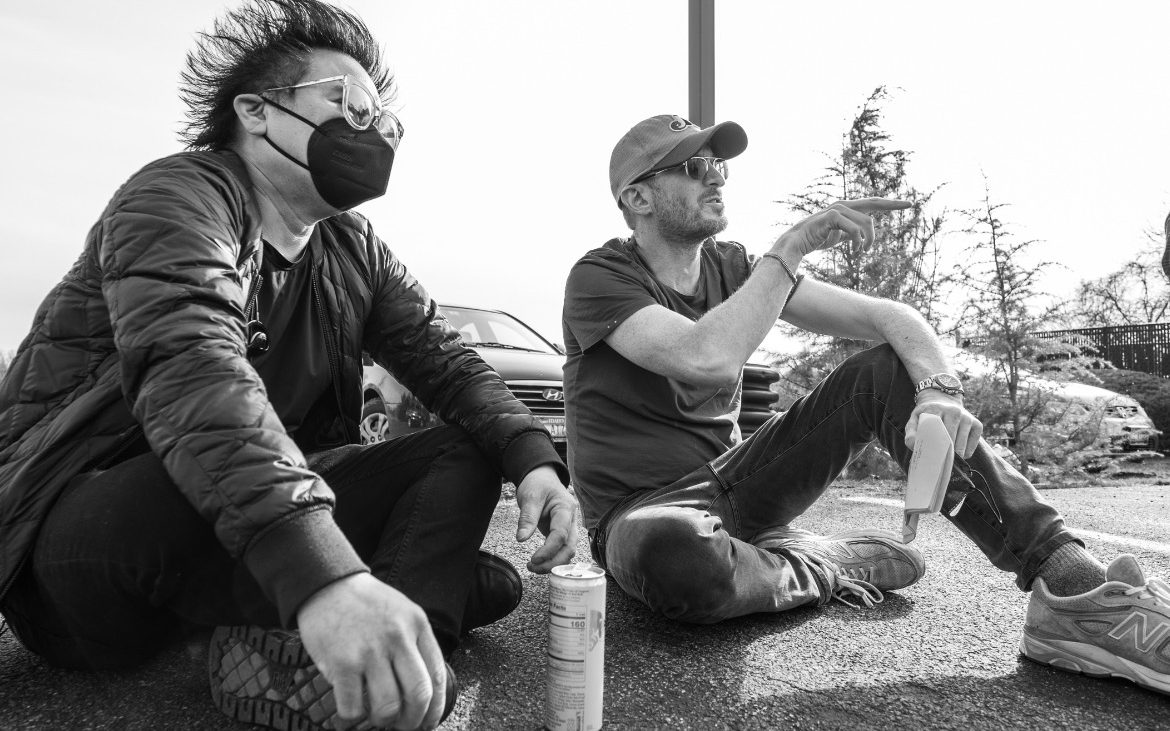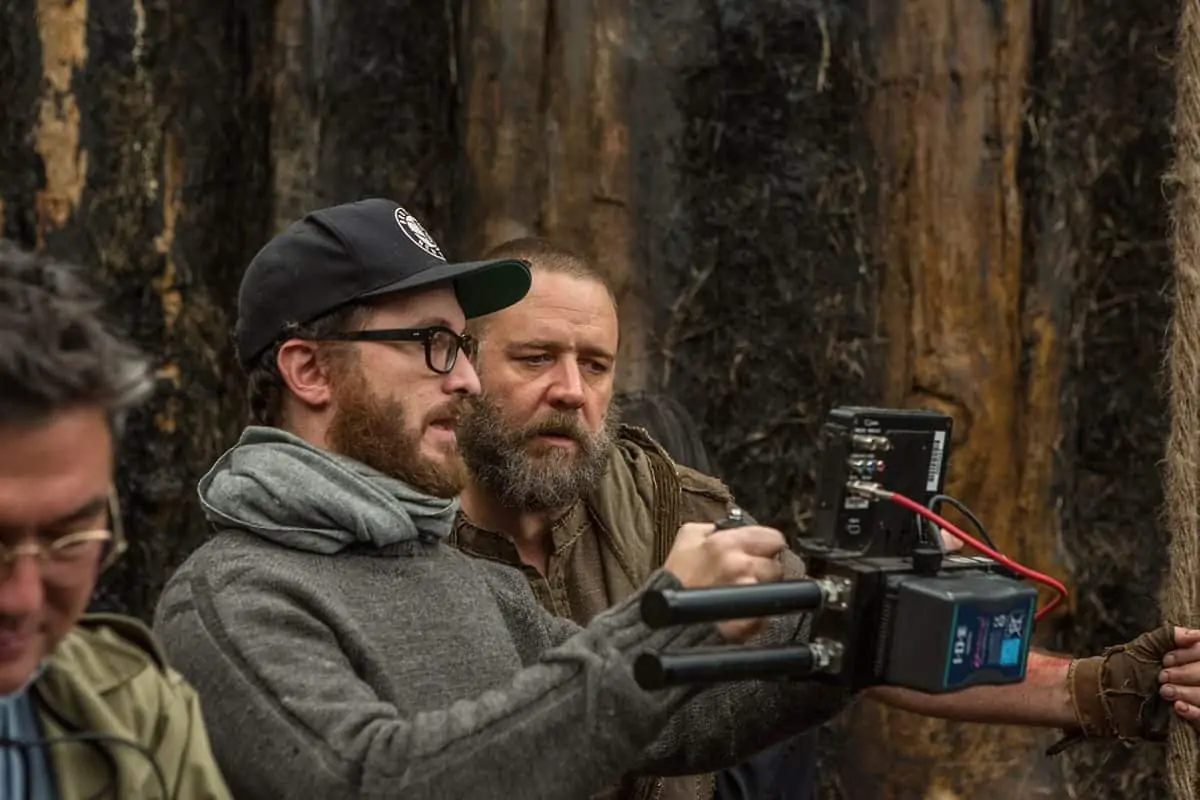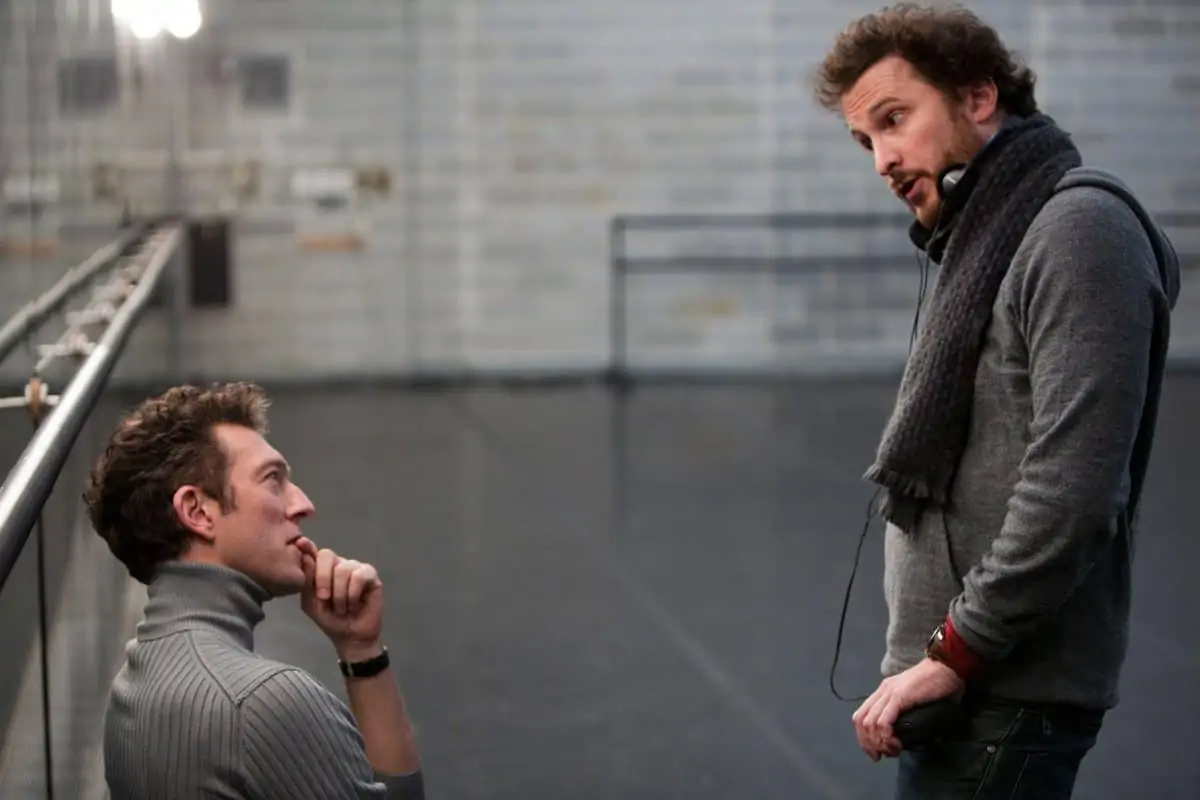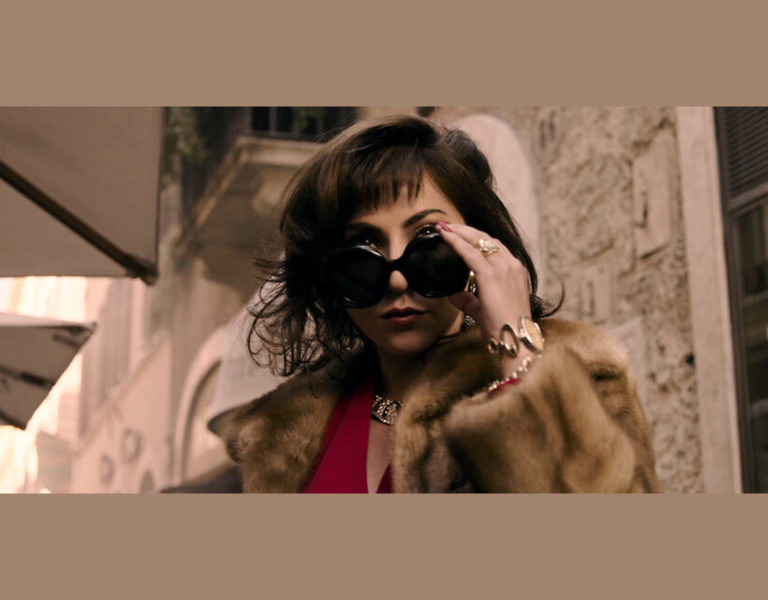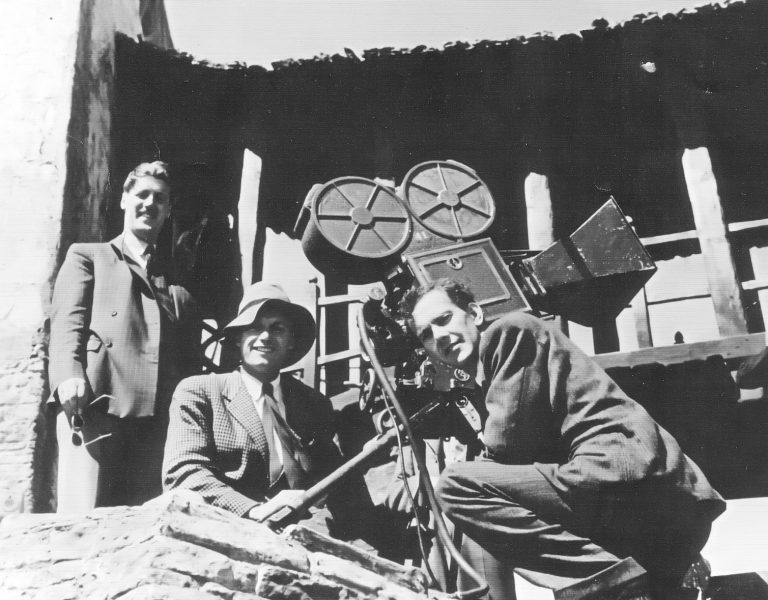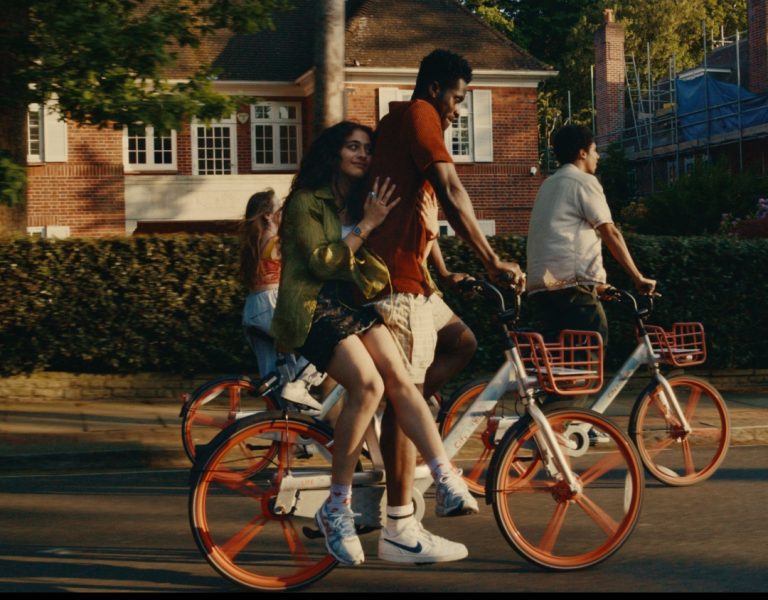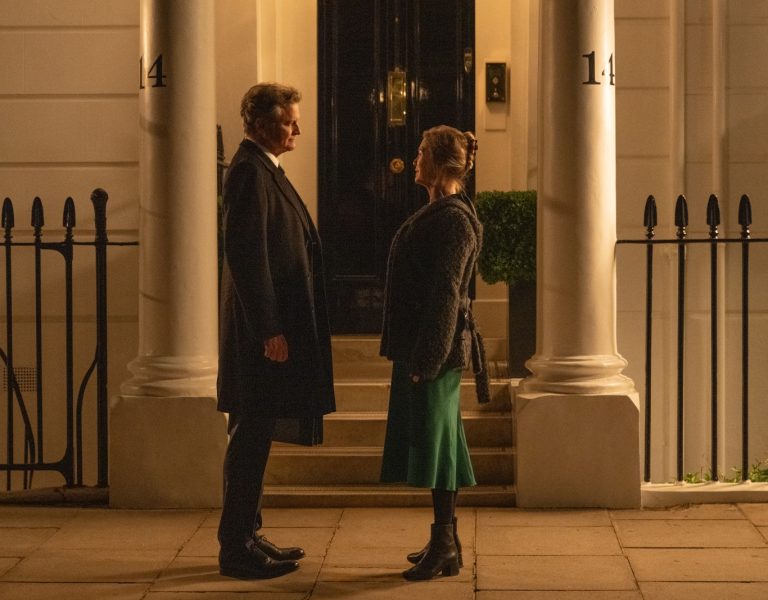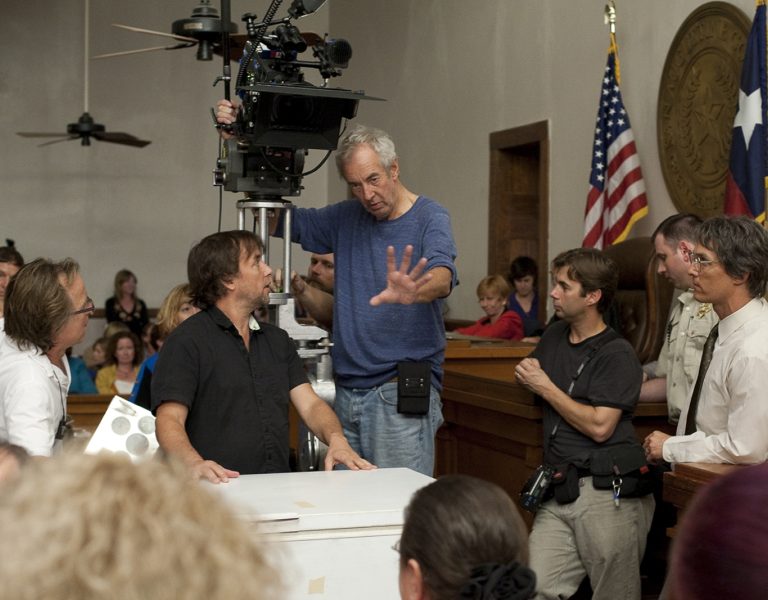JOURNEY OF REDEMPTION
Mesmerised by the play The Whale, director Darren Aronofsky set his sights on translating the story of regret, transformation, and salvation from stage to screen. Friend and valued collaborator Matthew Libatique ASC was trusted with lensing an intimate tale that unfolds in a one-bedroom apartment in a way that would not feel static while conveying a powerful message.
Like most of cinematographer Matthew Libatique ASC and director Darren Aronofsky’s joint creations, once Aronofsky shares an idea it may take around 10 years for the film to be made. When they were wrapping Requiem for a Dream, the director mentioned a script called The Understudy which a decade later became Black Swan.
Similarly, Aronofsky had been interested in making The Whale after seeing Samuel D. Hunter’s stage play in New York in 2012. Fast forward to 2021 when the world was emerging from the pandemic lockdown, and Libatique, like many filmmakers, “was itching for something to do and trying to figure out what their place was going to be.” Thankfully for Libatique, Aronofsky was as eager to be back on the set, so, along with friend and producer, Jeremy Dawson, they began developing the idea for a screen adaptation, working closely with writer Hunter.
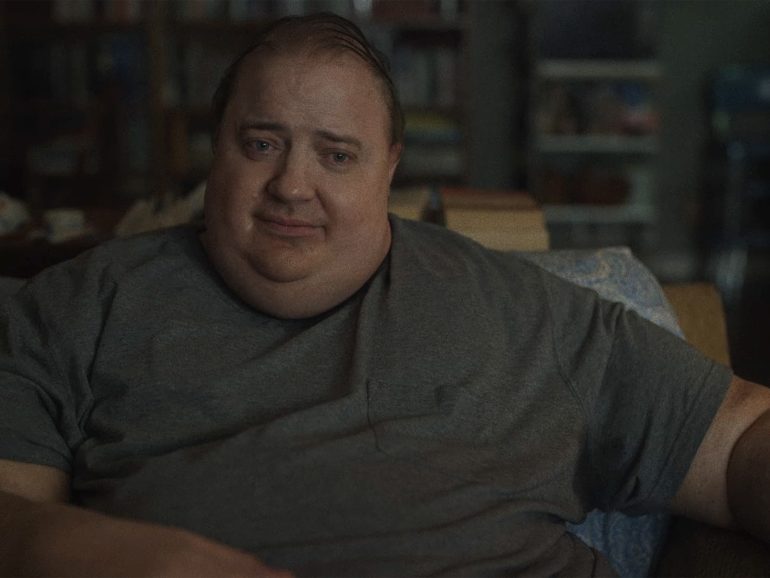
The Whale introduces Charlie – played by a barely recognisable Brendan Fraser whose performance earned him a Best Actor Critics’ Choice Award and further nominations – a reclusive and morbidly obese English teacher who, following heartbreak and loss, hides from the world and is slowly eating himself to an early death. Seeking a final chance at redemption, Charlie is desperate to reconnect with his estranged teenage daughter, Ellie (Sadie Sink).
“I connected with the themes and ideas, and the way it found beauty in things our prejudices too often make inhuman,” Aronofsky says of his reaction to the Broadway play. “It made my heart ache, it made me laugh, and I felt inspired by the bravery and grace each character finds.”
When translating from stage to screen, the ambition was to keep the production small and COVID-friendly, so it was contained in one place. “Darren’s main concern was what we should do with the camera to ensure shooting was COVID safe,” says Libatique. “I had some ideas because I’d been talking to different productions and was involved in Union discussions in the early days of the pandemic around the methods we could use when having to be on set and operate cameras.”
Aronofsky and Hunter were excited by the challenge of keeping the story in a single space where the characters are trying to save one another. “But it had to not feel claustrophobic,” adds Hunter. “The atmosphere needed to feel inviting enough that audiences could lose themselves inside it.”
Aronofsky views The Whale as a story that asks a simple but essential question: can we save each other? “That feels important in the world right now, especially when people seem more than ever to be turning their backs on one another,” he says. “For me, this is what cinema is all about. Through the power of emotion, a story like this can put us into the shoes of a man we might otherwise never even wonder about and remind us that all the promise of love and redemption is there in every human existence.”
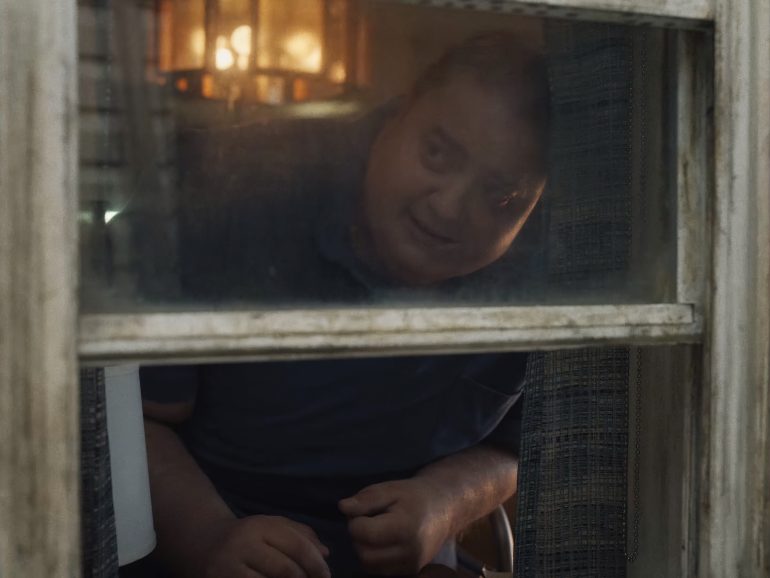
The beauty of simplicity
Aside from extensive planning and logistics to ensure the shoot was compliant with COVID guidelines within the small space of Charlie’s one-bedroom apartment within where almost all the narrative plays out over five days, Libatique found watching footage of the play helpful when determining the visual approach. “I saw we would need to strip away all the theatricality because it was essentially a couch with no walls. It was all about dialogue and performance,” says the cinematographer. “And while there was also room for us to paint the picture in cinematic form, the simplicity was part of its charm.”
As logistical conversations became creative discussions, Aronofksy and Libatique spent an extensive period exploring how to avoid the film feeling static. Libatique compiled stills and references from films that in some way resembled a naturalism he thought The Whale could adopt.
Although he never quite found what he was looking for, he was on the right path: “Everything was almost too beautiful. Even though it was naturalistic, it still looked like a stylistic choice. I wanted to go a little further and see how banal I could make it. But banal images were too banal and stylistic ones were too stylistic, so we landed somewhere in between.”
During this process, when trying to hold the audience’s interest the camera was more important than the light which Libatique blended and ensured adhered to the language of the narrative. In addition, Aronofsky devised a novel method to break up scenes. “In the screenplay, there are scene breaks, but in the script, they just follow along in real time. In the film, they happen in real time too, but Darren marks them with a wide shot,” explains Libatique. “Something happens with a character, and then Darren resets to a wide shot and introduces the next sequence. That clever technique gave us a baseline to work from.”
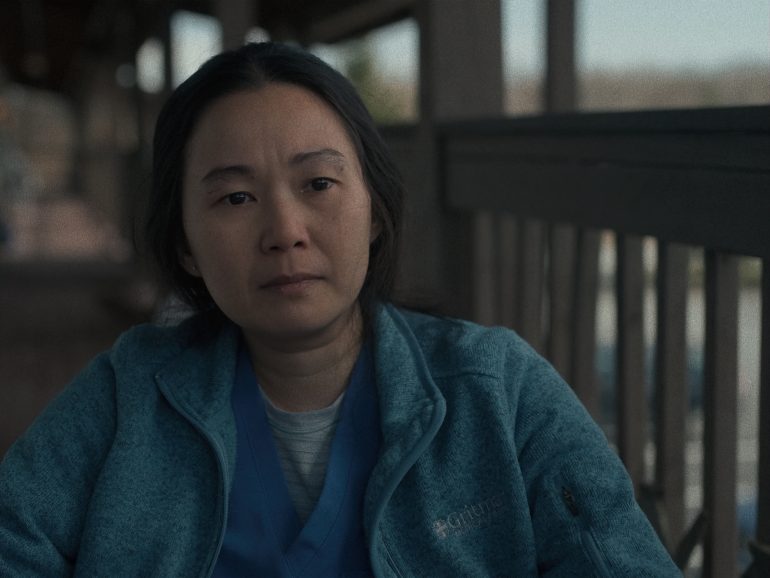
Having worked with the Sony Venice on previous productions, including a short film with Olivia Wilde, Libatique was impressed by the camera’s performance in low light. Knowing he was going to work at lower light levels on The Whale, specifically because he “didn’t want the ambience to start to overtake the film”, he opted for the camera again.
With a focus on camera movement, and working in a COVID safe manner, Libatique chose to shoot the entire film using a DJI Ronin stabilisation system on a jib arm, pairing the Sony Venice with Angenieux Optimo Primes as it was the lens that best balanced the Venice while on the Ronin as well as Libatique being a fan of the lens’s performance.
“We worked at 6K, so we needed some large format glass. TCS in New York, showed me a few options but the Angenieux offered that soft fall off I like and performed well in terms of highlights in the windows so I didn’t get any flaring,” says Libatique. “They reminded me of the Cooke S4s when I shot on film, and I had the same feeling as the first time I saw those. This wasn’t a movie where I needed aberration and flares – I needed the lens to just capture it and give me the most beautiful image possible.
“Aurelia Winborn my first AC was a fantastic collaborator while working with that lens. She was often at T2 and pretty wide open and she doesn’t use a monitor, she stands by the camera. I don’t know how she does it that way in this day and age – it’s very impressive.”
Breaking up the rhythm
After wrapping Don’t Worry Darling Libatique went straight to New York to begin three weeks of prep on The Whale ahead of rehearsals. “We had a couch and the set taped off and Darren would walk around with his iPhone and frame up, with all scenes meticulously blocked,” says Libatique. “All the actors were there, and Darren loves when he is working with his actors and seeing how they perform.”
Aronofksy – who also enjoys using the over the shoulder shot as a connective piece – soon realised that the main character Charlie was like the sun everything revolved around. “Ultimately, the script outlined that we were going to be over Charlie’s shoulder, and he’d always be sitting while everyone else is standing,” says Libatique. “So, Darren came up with the brilliant idea of framing for 1.33 rather than 1.85 or 2.40 as there’s nothing to see peripherally anyway and it helped us accommodate the over the shoulder when Charlie was sitting.”
Once Aronofsky builds the language of the camera, he doesn’t deviate from it. “So, everyone involved in the circle around the camera knows what they’re going to do for a scene and after a few days, everybody knew the rhythm,” adds Libatique. “It was going to take a little while because Darren gives actors as much opportunity to perform in the way they want.”
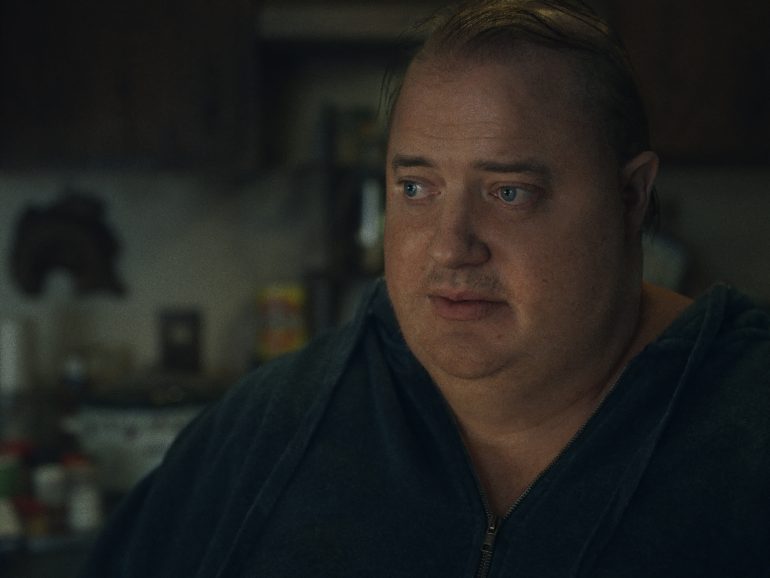
As expected from a stage to screen translation, the film was dialogue heavy. And as the narrative unfolds in one space Aronofsky and Libatique were concerned the audience’s attention may not be held by a story with little physical movement or location change. “But this movie taught me that you can tell a story like this within this space and not make it feel static,” adds Libatique. “The moments of rest from the interior of his apartment living room are sequences taking place in his bedroom, bathroom, and porch. And when shooting those elements, less is more, and they broke up the rhythm a little.”
Although Charlie’s apartment was a set built in upstate New York, its look was motivated by existing apartments including some in Moscow, Idaho, where the film is set and where writer Samuel D. Hunter grew up. During the 26-day shoot, a location day was required – also in New Paltz, New York – to shoot the exterior of the apartment building.
Production designers Mark Friedberg and Robert Pyzocha brought Charlie’s apartment to life as a modest, cosy, professorial space packed with books and framed photos which doubled up as a space for him to hide.
“It required clever brilliance from the production designers to bring so much life to this single room. One of the biggest breakthroughs was the placement of Charlie’s couch,” says Aronofsky. “Most apartments have the couch against a wall, but they found a way to float his couch in the middle of the room while keeping it organic. It seems simple, but it perfectly opened everything up and afforded us many more opportunities for movement.”
Prior to Libatique arriving in New York, every week he discussed the set with the design team and examined diagrams. “When I walked on set, there was a sense of realism to it,” says Libatique. “We made some augmentations for framing once we’d decided on 1.33 framing, creating a drop ceiling in the kitchen so we had something to look at when we were framing in that direction. We also decided where our potential wild walls would be because by that point we knew where were great places for a wide shot, and when we would need to take walls out.
“The crew was small, and we didn’t have a construction team on the set, so our grips had to move all the wild walls which I know is common internationally, but in America another crew is normally responsible for that. So, I can’t praise key grip Mitch Lillian and dolly grip Brendan Lowry enough, who were both working the jib arm and creating all the wild walls.”
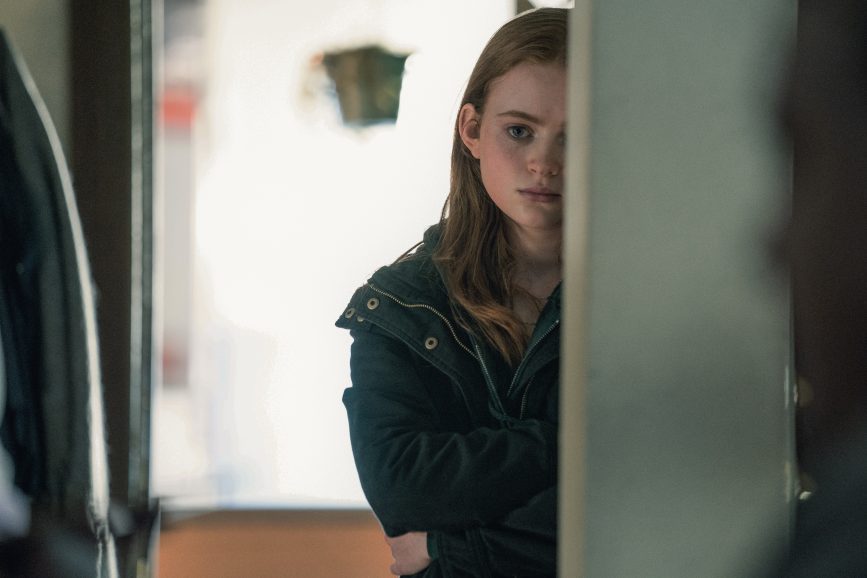
Digital exploration
The Whale saw Aronofsky venture into digital territory for the first time, partly motivated by the pandemic challenges experienced by filmmakers. “We thought about what we could do to eliminate most activity around the actors who weren’t wearing masks, and one solution was using a digital camera,” says Libatique. “Continuing to roll without having to reload when shooting digitally was also interesting to Darren and he fell in love with the idea he could see a clean image and evaluate the frame more accurately.”
As one of the qualities Aronofksy adores most when shooting on film is the grain produced, Libatique brought the team behind the LiveGrain real-time texturing tool on board which – combined with the Sony Venice at the base 2500 ISO and soft fall of the Angenieux Primes – produced the desired grain effect when using digital capture.
“I also flashed the file a little to lift into the shadows. It’s like when, shooting on film, you’d have one shot that was underexposed. Well, I wanted the whole movie to feel that way,” he says. “And then the final layer of The Whale’s look was the LUT created by DIT Jeff Flohr and I. We revisited some settings I’d previously created with Sony and Jeff and I came up with our own settings after shooting tests, and then we really didn’t settle on our grain until three days into the production.
“Jeff was also instrumental in keeping me on track throughout when I was operating the movie from my Samsung Odyssey – a little a monitor I use as a reflective light metre and for false colour, dialled in. I would rely on Jeff, and we would constantly talk about exposure, so he was another set of eyes for me.”
In the grade, Libatique worked with a collaborator he has team up with since Black Swan – Company 3 colourist, Tim Stipan. “I’m not one to reinvent the wheel when I get into the DI – everything I prepare for is to capture the film as much as intended in camera. I spend more time trying to get to my original intention than trying to create something new,” says the cinematographer. “But obviously there’s magic that happens in the DI and I like to spend time matching a scene as cleanly as possible with Tim.”

Accentuated moments
One of the most powerful scenes in The Whale sees Charlie, following an emotional experience, binge on any food he can find in his apartment. “Darren wanted to shoot as much in sequence as possible, so by the time we got to that scene, Brendan had been through all these machinations of performance, and he’d basically become Charlie, but the part that was Brendan still must have found that scene very hard to shoot,” says Libatique.
Aronofsky wanted to accentuate that scene with camera movement in a similar way he used the camera at the beginning of the film to take the audience in from wide to tight or from one part of the room to another. “Darren used camera movement more dynamically in the bingeing scene and made the blocking as complicated as possible because it was a culmination of tension and emotion that had been building,” says Libatique, who finds it fascinating to observe Aronofsky at work and the rules he follows when constructing a scene.
“He’ll push his blocking to the limit of his rules, so actors move around as much as they can because he doesn’t want it to feel stagnant. There will be four lines standing and then two sitting down. He just wanted to make it realistic, but then he pushes his blocking to the point where his language doesn’t work anymore.”
Using cranes and dollies and inspired by other Hollywood theatrical adaptations including Mike Nichols’ Who’s Afraid of Virginia Woolf and Elia Kazan’s A Streetcar Named Desire, the pair adopted classical camera movements to enhance the intimacy and tension within the single location.
“Ultimately you need to return to the text. The story always tells you where the camera should be,” highlights Aronofsky. “Stylistically, this was a real departure for us from our last movie together, mother!, which was fully handheld, but Matty came in full of ideas that helped me to figure out how to move the camera around this room in interesting ways.”
In one shot Aronofsky wanted the camera behind Charlie, so the audience could barely see over his shoulder, meaning the shot favoured the POV of Ellie as she walked from the dining room to the kitchen. “You see Charlie trying to turn and move his body. Just through the simple placement of the camera and a little movement left to right conveys a lot about the character’s physical state,” adds Libatique. “When Charlie stands up for the first time our initial camera position didn’t make him look big enough, so we boomed down. Every placement of the camera was precisely thought out and Darren’s always trying to use the camera to accentuate the moment in the shot that’s important.”
While Aronofsky enjoys being in close-up, they were not used as extensively in The Whale as his previous work. “We often went for a medium because there’s a physicality to the characters, especially with Ellie – you want to see her shoulders and how she moves as an angry teenager which goes back to what Darren does in terms of how high or low the camera is and what our proximity to the performer is,” says Libatique. “It’s about what we want to see and what’s going to communicate the moment best. That’s developed over time – as collaborators we’ve looked for ways to maximise the performance by having the camera a little further away or really close.”
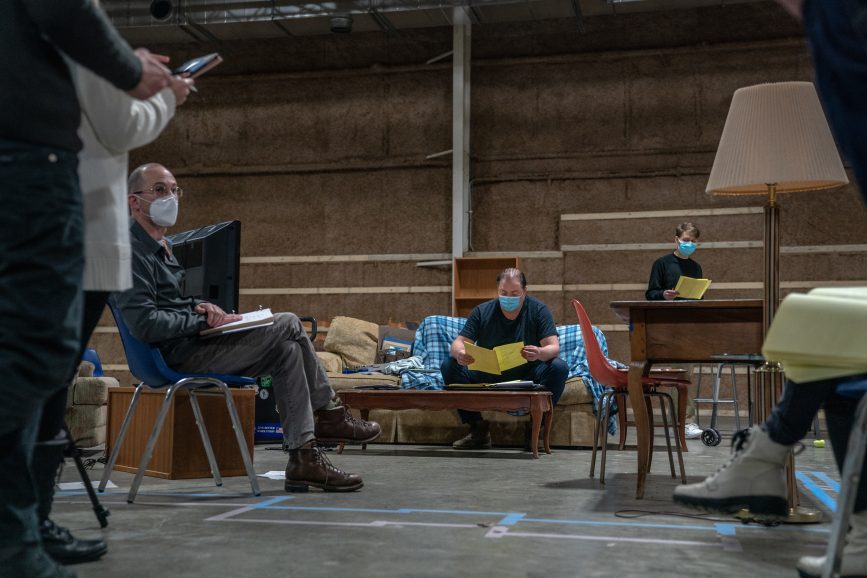
Language of light
Aronofsky refers to Libatique as his “brother-in-arms” and “brilliant in the way he uses light to paint” while Fraser also commends the cinematographer as being a “master of using light to shift the mood and match the weather” and praises him for lighting the apartment “like it was a cathedral.”
When creating the lighting scheme, accommodating camera movement was at the forefront. “I always have to expect Darren will want to do a 360-degree shot unless we’re in coverage. But even then, once I established something, like in the very first scene, when we’re introduced to Charlie and we shoot 270 degrees, after that, the light has been established, so I can’t deviate from it too much when we get to coverage,” says Libatique.
“Darren’s also a fan of subjectivity and the camera placement has a lot to do with who the main character is looking at, or who is looking at the main character. So, in that respect, some of the language from our previous productions flowed through into this.”
The cinematographer needed to give Aronofsky and the actors “as big a playground as possible within the restricted space,” so he did not want to use a lot of light “as the more you put onto a set, the more bounces back onto the set and then you’re adding negative to try to minimise that.”
While the stage version ends on a hard cut to black, in the film, Charlie takes a step towards the light. Early on, Aronofksy and Libatique had the idea that the weather would evolve over the course of the film. “Rain comes, but on the last day, the sun is out, so when the door opens, the light is shooting down onto Charlie,” says the director. “When you make a big choice like that, you’ve just got to throw everything you have at it and hope you’ve done enough that the audience comes with you.”
When the audience first meet Charlie, Aronofsky wanted it to feel like a dark, overcast, and rainy day. Most of the light would come from the interior but inside would still feel quite dank. Discussions around the language of light then dictated the second day would be overcast but not raining.
“So, it’s a bit brighter, but the lights are off,” adds Libatique. “The third day is similarly overcast, but brighter and then on the fourth day it becomes rainy again because it was building to the climactic nighttime scene in a rainstorm featuring Charlie and Thomas, who claims to be a New Life Church missionary and wants to save Charlie. The next day it’s almost like the earth has been cleansed and it’s a sunny day for the first time in the movie and that’s where Charlie’s redemption lies.”
Keeping light fixtures at a great enough distance and spread out within the small space was important so the camera could be as free to move as possible. Two chief practicals were heavily relied on to the sides of the couch – outfitted with NYX Bulbs from Astera that could be controlled and then augmented with small boxes made by gaffer, John Velez.
“We could put one or two of the NYX Globes inside them,” elaborates Libatique, who could accurately and remotely control their colour. “I was also working with a fantastic lighting programmer Alex Joans which is something I’ve become used to.”
Astera Titan Tubes were strategically placed in the ceiling with diffusion underneath from Magic Cloth or light grid. “So, we had a little top ambience in places we couldn’t get any kind of level. But then I used lighting cues to bring the light level up and then down over the course of a camera move, bringing down the practical when needed. We also worked with a lot of LiteGear LiteMat Spectrums because I love the colour and Hudson Spider Mozzie when we were in coverage to augment the key light.”
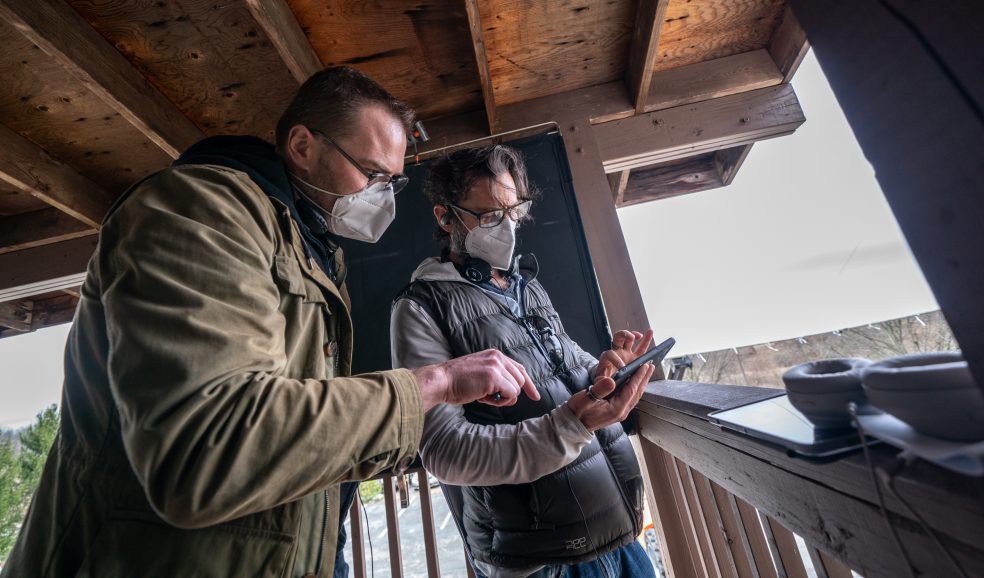
A shoot with significance
A sizeable transformation and team effort morphed Fraser into Charlie with the help of a talented team including prosthetic makeup designer Adrian Morot, who Libatique and Aronofsky have collaborated with on multiple projects. “In unison with Judy Chin, our makeup department head, and another collaborator we’ve worked with since Requiem for a Dream, Adrian and I have many conversations about skin tone, looking at what the actor’s natural skin tone is and what happens to them when they get hot,” says Libatique. “Adrian creates a cocktail that means I’ve never struggled with skin tone, which is so important, especially when working with prosthetics.”
Libatique also commends Fraser, not only for an outstanding performance, but his dedication and patience when working with such extensive prosthetics. “It was difficult for him because the makeup required touch ups and parts of the prosthetic needed to be pulled down as he moved, and sometimes we’d continue to roll while the team came in to reset. There was also an opening in the suit in which a hose could be inserted to blow cold air as he was roasting inside.”
One of Libatique’s lasting and treasured memories of his time on set occurred at the end of the shoot. “The cast were all so incredible but at one point I lost sight of Brendan’s performance and was concentrating on the work I was doing,” says Libatique. “But then at the end, everybody realised what he had just done. There was also this relief that he could finally take off the prosthetics. I remember it being a celebration of him, and of the writer Sam Hunter. It was like being part of someone else’s journey and helping them along and it felt like a victory at the end.”
While The Whale is the most pared-down film Aronofsky has made, it was a significant production for the director and Libatique as filmmakers partly due to the pandemic struggles society and the industry had just gone through and continued to encounter. “There were a lot of doubts, fears, and insecurities, so it wasn’t lost on me how special it was to be back doing something that felt so normal,” says Libatique. “That, in combination with an opportunity to work with Darren again, which are just too few and far between. He’s like Terry Gilliam at this point. Everyone’s asking, “When are you going to make another movie?” So, every time I get a chance to work with him, it’s incredibly special.”
